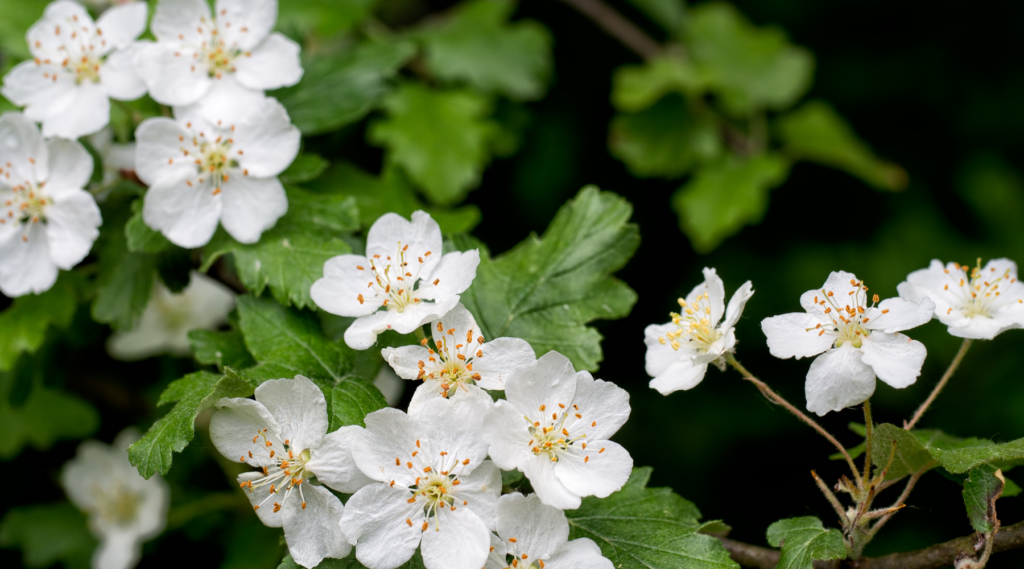
The Hawthorn tree, ‘Crataegus monogyna‘, grows across North America, Europe, and Asia. Native to Ireland & steeped in folklore, Hawthorn is an incredible source of natural colour. Its beautiful white flowers, vibrant red berries, and thorny branches make it a captivating specimen throughout the Irish landscape. Beyond its beauty & history, this tree holds a stunning source of natural colour. Consider natural dyeing with hawthorn & see for yourself the vibrant range of colours it provides.
Revered In The Ancient World
In ancient Ireland, the hawthorn was the tree of the fairies & signified a gateway to other realms. Believed to bring luck to anyone who cut this tree down. The Greeks & Romans used it in their most important ceremonies for birth & marriage. While the Pagans viewed it as a symbol of fertility and placed it at the foot of newly married couples.
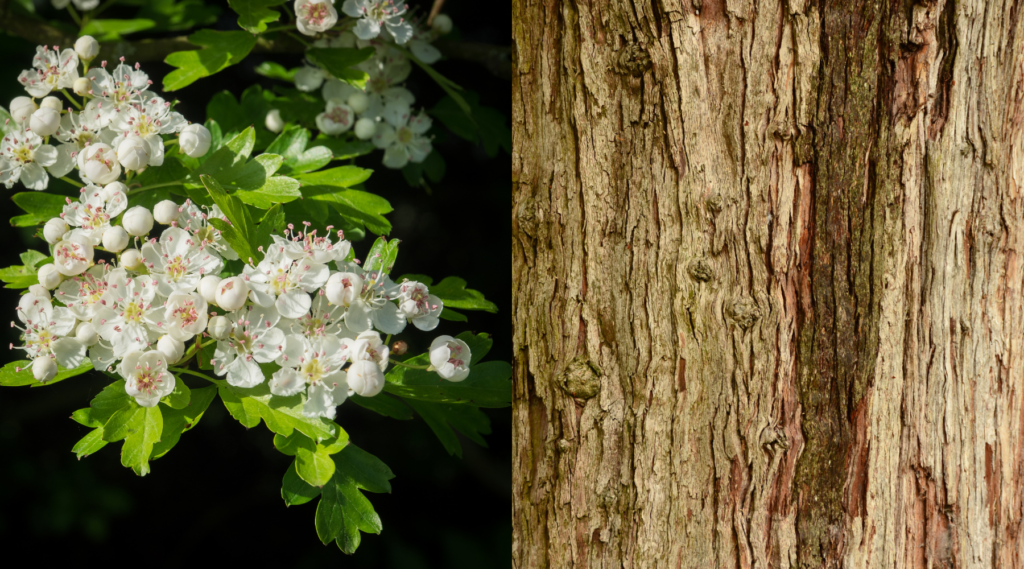
Hawthorn As Medicine
Hawthorn berries have been used to make jellies, jams, liqueurs, and wines for centuries. Medicinally, it is believed to be the ultimate heart tonic, with a history of use for heart disease, high blood pressure & cholesterol. With a high concentration of flavonoids that support the circulatory system, it is used as an adaptogenic tonic to help with cardiovascular disease, anxiety & poor circulation. The leaves, flowers & berries can soothe the digestive system & relieve bloating.
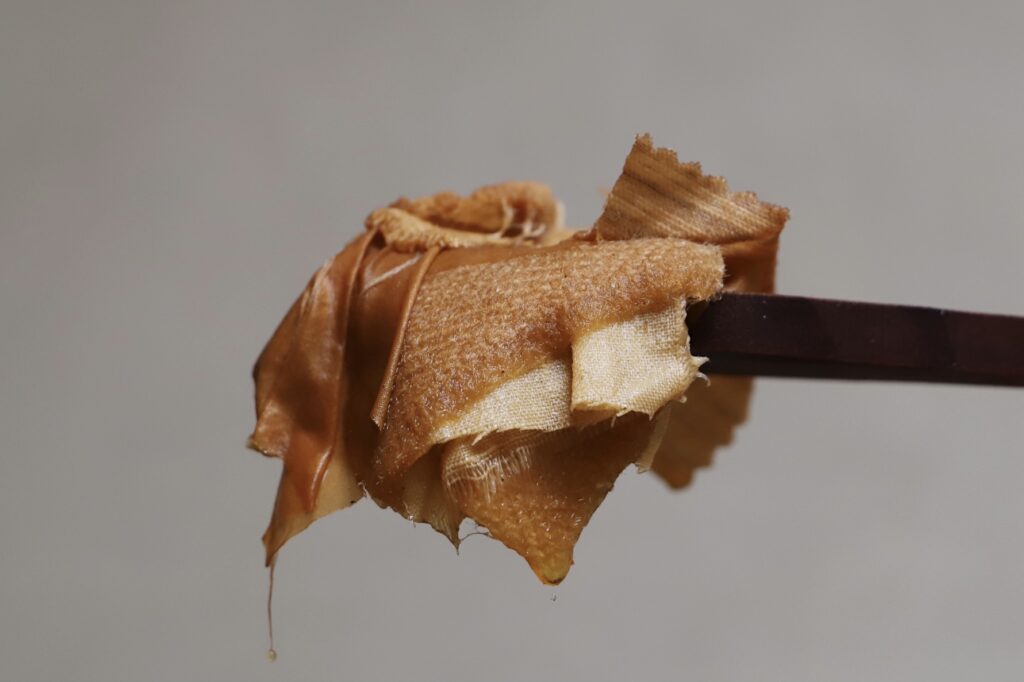
Natural Dyeing With Hawthorn
As a natural dye, the hawthorn tree offers a range of colours, from warm yellows to deep terracotta reds. To make dye, you can work with flowers, leaves or branches. Carefully remove whichever part you decide to work with from the tree, add to a pot of water then simmer gently for 3-4 hours. Once the liquid has changed colour & you have a nice strong dye to work with, strain out the plant parts & add your scoured and mordanted fibres to the dye pot.
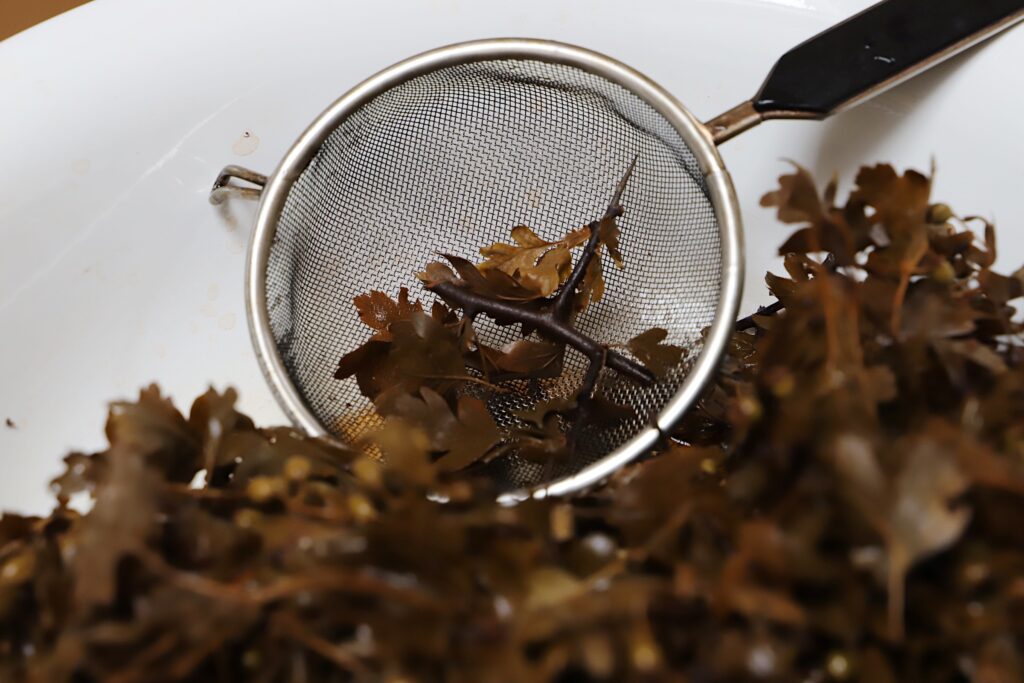
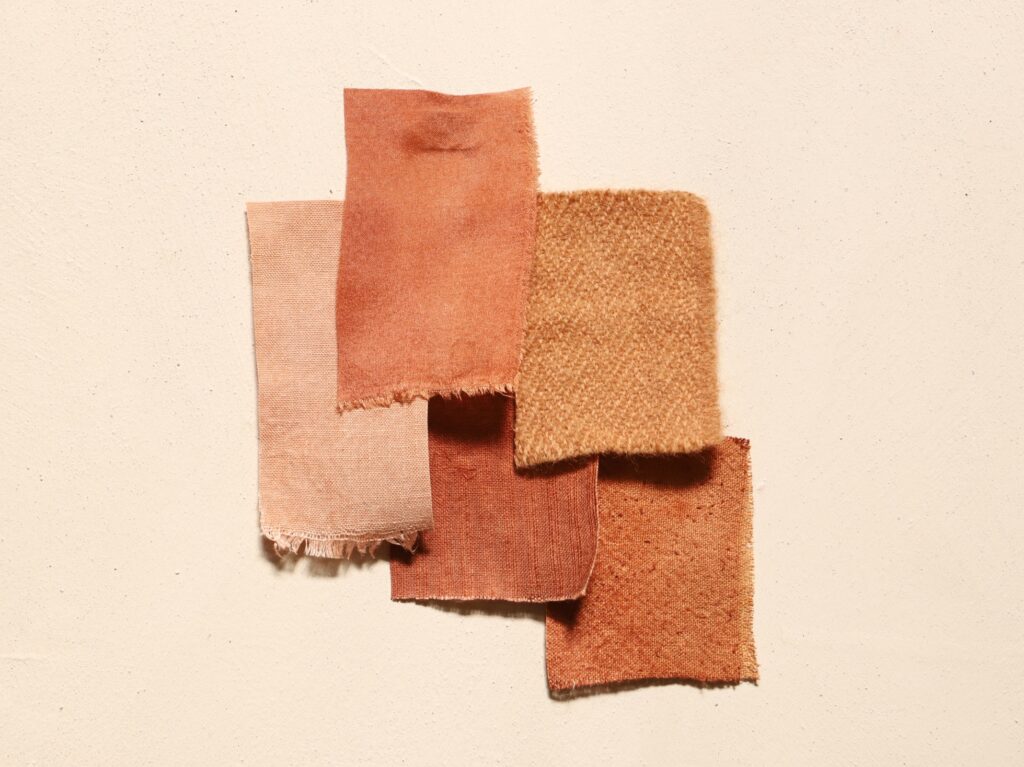
How to dye with hawthorn:
- Add your hawthorn to a pot & cover with water.
- Place on the stove & add gentle heat.
- Simmer for 3-4 hours.
- When the water changes colour & you have a strong dye to work with, strain out the hawthorn.
- Next, add your scoured & mordanted fibre and leave in the dye until you’re happy with the colour. If dyeing cotton, linen or plant fibre you can add your fibre to the pot. If dyeing animal fibre, allow the dye to cool completely before adding your fibre.
- Leave the fibre in the dye until you are happy with the colour.
- Remove your fibre from the dye, rinse with an eco-friendly detergent & hang to dry.
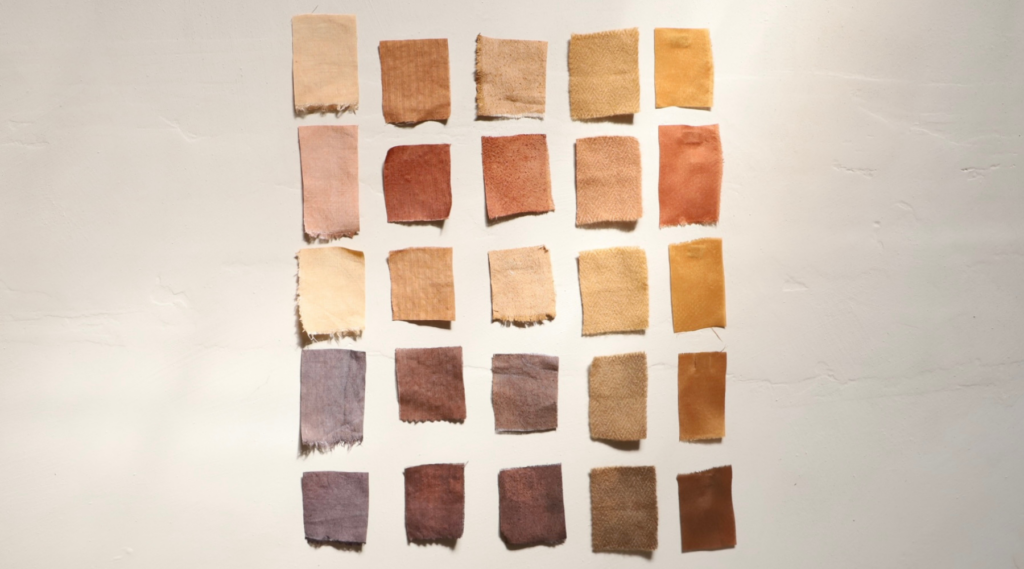
A Sustainable Source of Natural Colour
One of the main advantages of using hawthorn tree for natural dyeing is its availability. You can find hawthorn trees in many parts of the world, making it a sustainable source of natural colour. The use of hawthorn trees for dyeing not only creates beautiful colours but also promotes environmental consciousness. By using natural dyes, you can avoid the harmful chemicals present in synthetic dyes, reduce your ecological footprint and contribute to a cleaner and greener planet.
Learn more about natural dyeing
If you want to learn about natural dyeing with simple ingredients like onion skins or avocado stones you can enrol in my free mini-course. ‘Naturally Dye Fabric With Avocado Stones‘. The class is hosted on teachable, to enrol enter your email & create a password.
Free Natural Dye Resources
For more beginner guides, look at other natural dye tutorials here. If you have been wanting to give natural dyeing a go, I would strongly recommend you start with avocados for surprising pinks or yellow onion skins for, you guessed it, yellows:) These are fun dyes, as neither requires a mordant, making them more straightforward. If you’re looking for a project to entertain yourself or a project for your kids, why not give this a go? Avocados are a great dye to introduce kids to the process & teach them about the richness of our natural world. Grab a plain t-shirt, an old pillow case or something white, off-white or cream & get dyeing.
Natural Dye Colour Guide
If you would like to learn more about the colours you can get from dye plants or sources of natural colour, take a look at ‘The Guide To Natural Colour & Plant Dyes‘ ebook. This comprehensive download will give you access to 200+ dye plants, detailed by plant type & colour. Cost: €18.
EXPAND YOUR NATURAL DYE SKILLS & DEEPEN YOUR PRACTICE
Whether experimenting with this plant or curious about other natural dyes, there’s so much more to discover. In the next few weeks, I’ll be re-opening enrolment for my Foundational Natural Dye Course & Coaching, where we’ll dive deep into the art and science of creating beautiful, sustainable colours from nature.
If you want to deepen your practice, this course will take you through foundational techniques of natural dyeing. Expand your craft & elevate your learning with live classes, a full natural dye curriculum & expert guidance to help you along the way. Keep an eye out for more details.
Until then, happy colour adventures!
x Kathryn
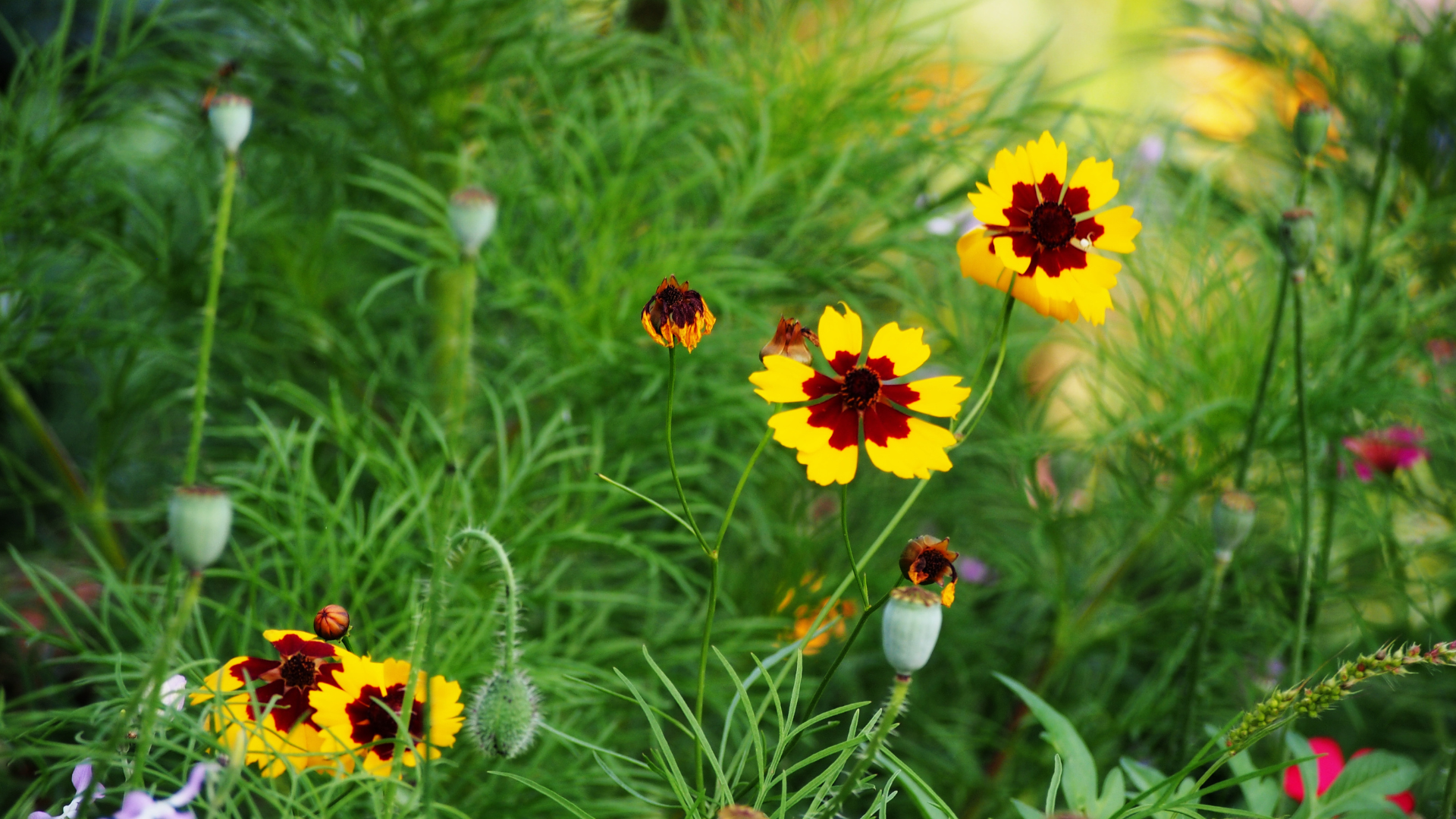
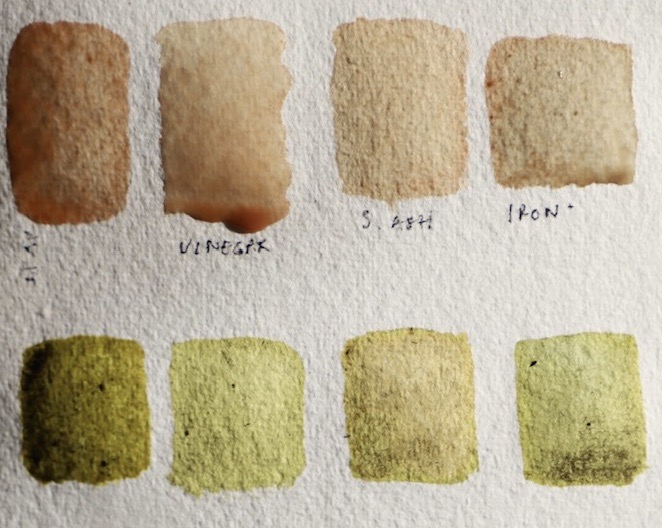
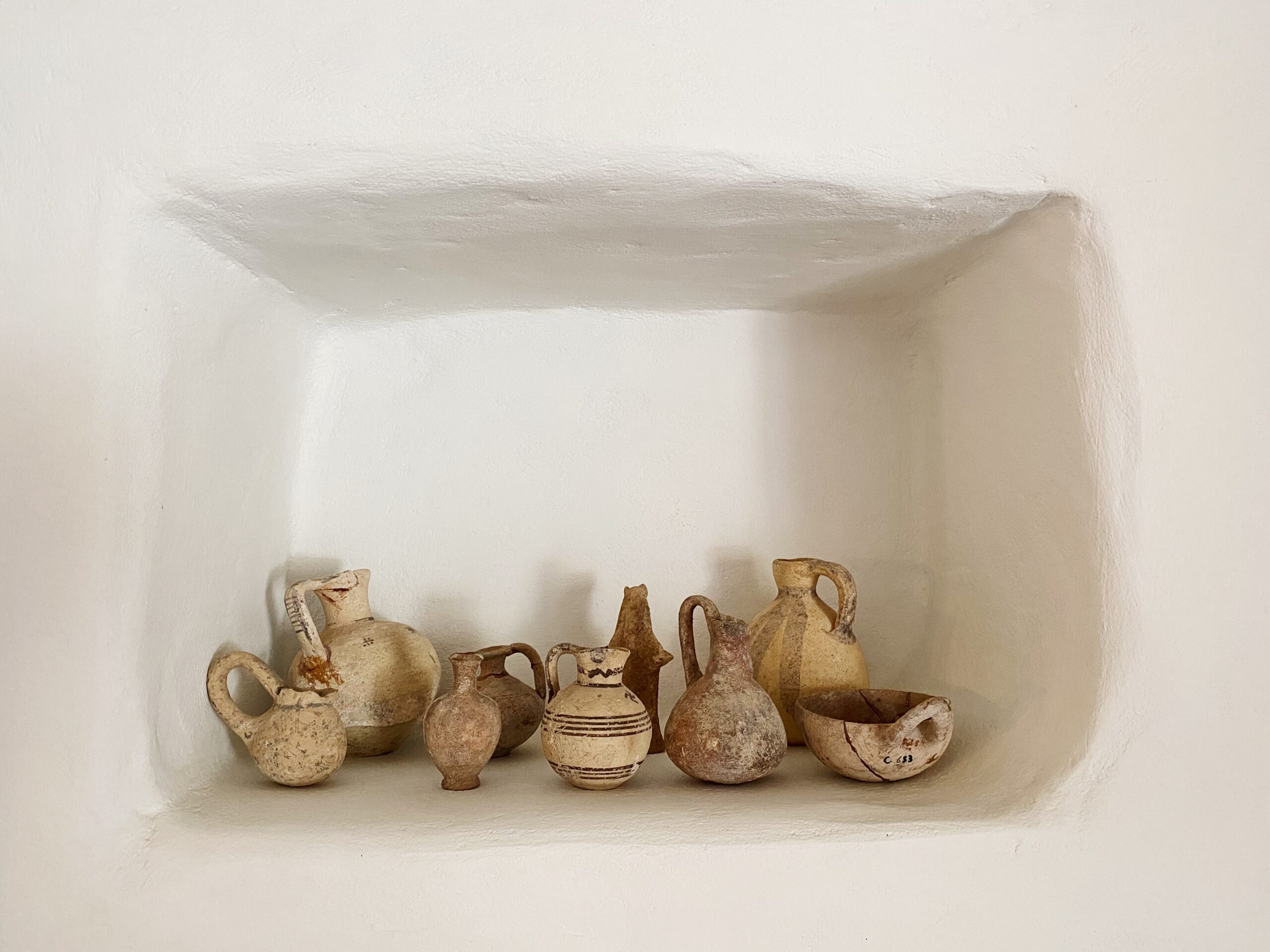
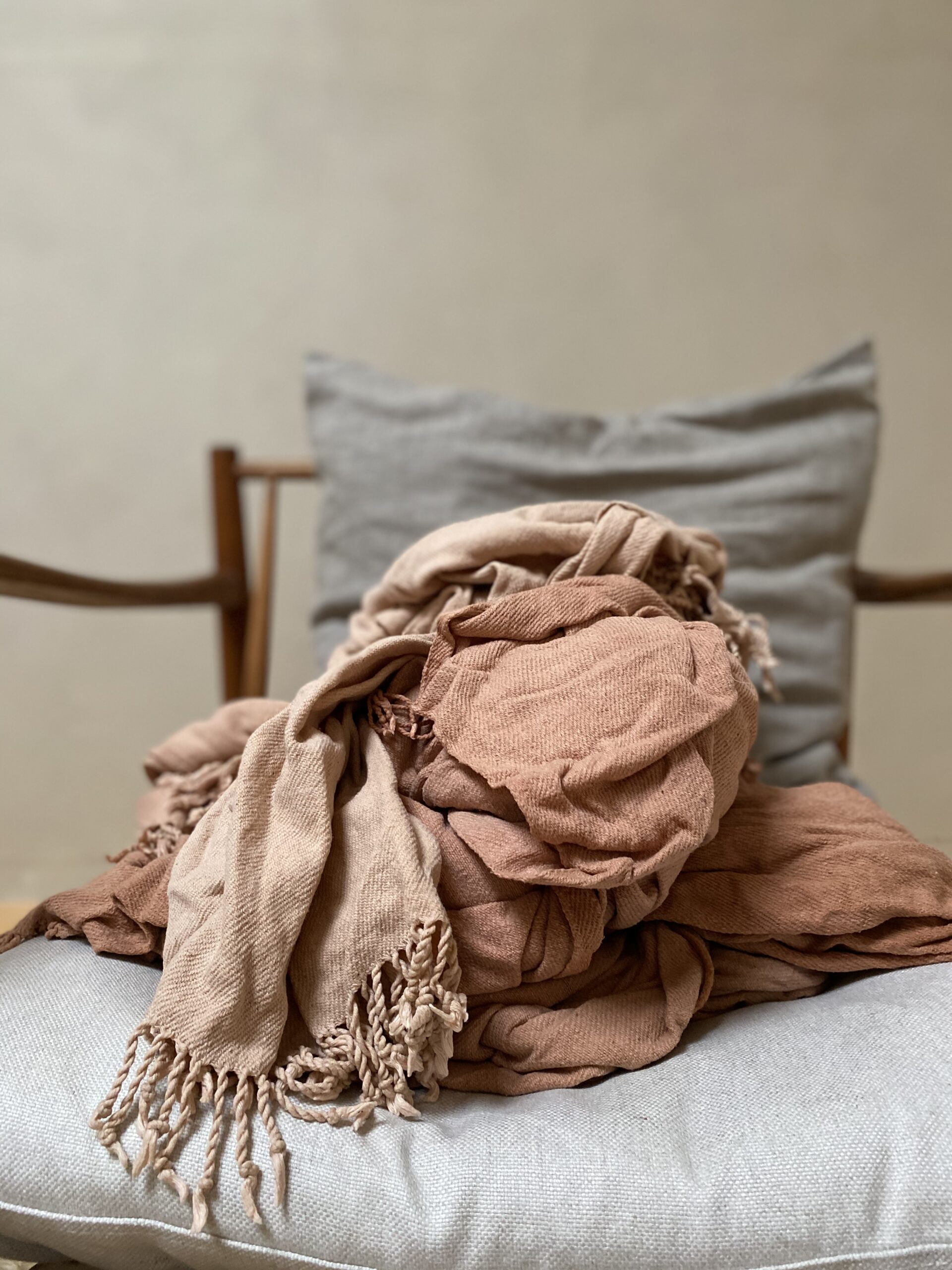


+ show Comments
- Hide Comments
add a comment